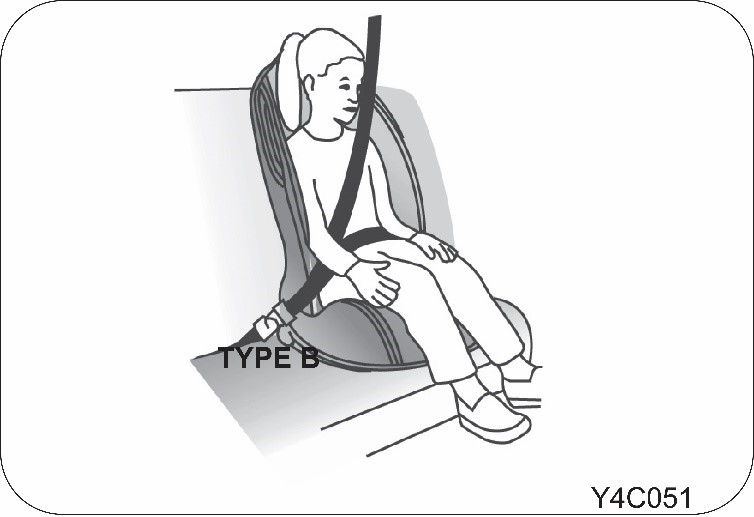It’s amazing how children seem to grow up faster than we think they would. As a parent, you’d like to make the most of this delightful phase while it lasts. At the same time, it is also important for you to keep your growing child safe in all situations – riding in a vehicle being one of them.
Using child safety seats is the only way of ensuring your child’s safety in a moving car. So far, in our #ChildSafetyOnTheGo series, we’ve seen how to enhance your kid’s safety with Backward and Forward Facing Child Seats. Kids outgrow the need for these seats as they become stronger, taller and heavier.
Focusing on older kids here, we will take a look at Booster Seats and throw light on when to use them along with tips on how to use them effectively.
What are Booster Seats?
As your child crosses the age of 4 years, chances are that they will outgrow their old Forward Facing child safety seats. At this age, their bodies are strong enough to have them buckled up with the vehicle’s standard seat belts.
However, because seat belts are typically designed to be used by an adult, their straps may not align correctly for your child. To help your child be correctly buckled-up with your seat belt contact points, you should use a booster seat.
Types of Booster Seats
As we’ve learnt by now, choosing the right seat for your child depends on a number of factors. Apart from the weight and height of your child we also need to consider the safety features (anchor points) of your vehicle seat.
Let’s take a look at the types of booster seats and how you should select the type that’s best suited for your child.
-
High Back Booster Seats:
High Back Booster seats are preferred when the child’s head goes above the car seat’s backrest and there’s no headrest available on the seat. In such a situation, the High Back Booster seat provides critical support for your child’s head, keeping them comfortable and safe.

-
Backless Booster Seats:
If the child’s head has the support of the car seat or the attached headrest, you could choose to use a Backless Booster seat.

How to use a Booster Seat
Booster seats are easy to install and use. Some booster seats do not attach to the seat and are held in place with the seat belt. As more and more vehicles come equipped with ISOFIX latches, you can get a child safety booster seat that has extra bottom anchors that fasten firmly to the anchors in the seat (ISOFIX). This will ensure that the seat has an additional support mechanism that prevents shifting of the seat in case of an impact.
Before seating your child in the seat, we suggest you check that the seat is held firmly in place with its fasteners. Next, ask your child to sit on the booster seat and use the car’s seat belt to fasten them to the seat. It’s important to remember that the seat belt should cross over the centre of the child’s collarbone and not go over their neck or shoulder. Similarly, the lap belt should cross high on the upper thighs and not over the stomach.
Some seats come equipped with an additional shoulder belt adjuster that helps guide the seat belt correctly over the child’s collarbone.
Give them their favourite book, play their favourite music and let them take in the view as they have a comfortable and safe ride.
Keep an eye out for more such child safety tips in our #ChildSafetyOnTheGo series!
Important points to note
-
All the procedures described here are to assist you in understanding the child restraint system. Use this as a reference only. When you install a child restraint to your vehicle, observe instructions for installation in the manual provided by the seat manufacturer & also your vehicle’s manual.
-
Child safety seats also come with specified minimum height and weight requirements. It’s recommended to follow these guidelines strictly and prioritize them over the age suggestions
-
Similarly, it’s recommended that kids continue using the front facing seats before moving to a booster seat, until they reach the height or weight limit of the seat. Look for a seat with additional height and weight limits so you can use the seat for a longer duration.
-
When your child restraint is not in use, remove it from the vehicle or keep it secured with a seat belt to prevent it from being thrown forward in case of a sudden stop or an accident. Child seats are rendered useless after an accident, irrespective of whether the child is in the seat or not. It’s advisable to replace the child seat in case the car meets with an accident with the seat installed, to ensure your child’s safety in future drives.
-
Child restraint anchorages are designed to withstand only those loads imposed by correctly fitted child restraints. Under no circumstances are they to be used for adult seat belts, harnesses or for attaching other items or equipment to the vehicle.
-
Remember that a child restraint seat left in a concealed vehicle can cause it to be very hot. Check the seating surface before seating your child in the child restraint.